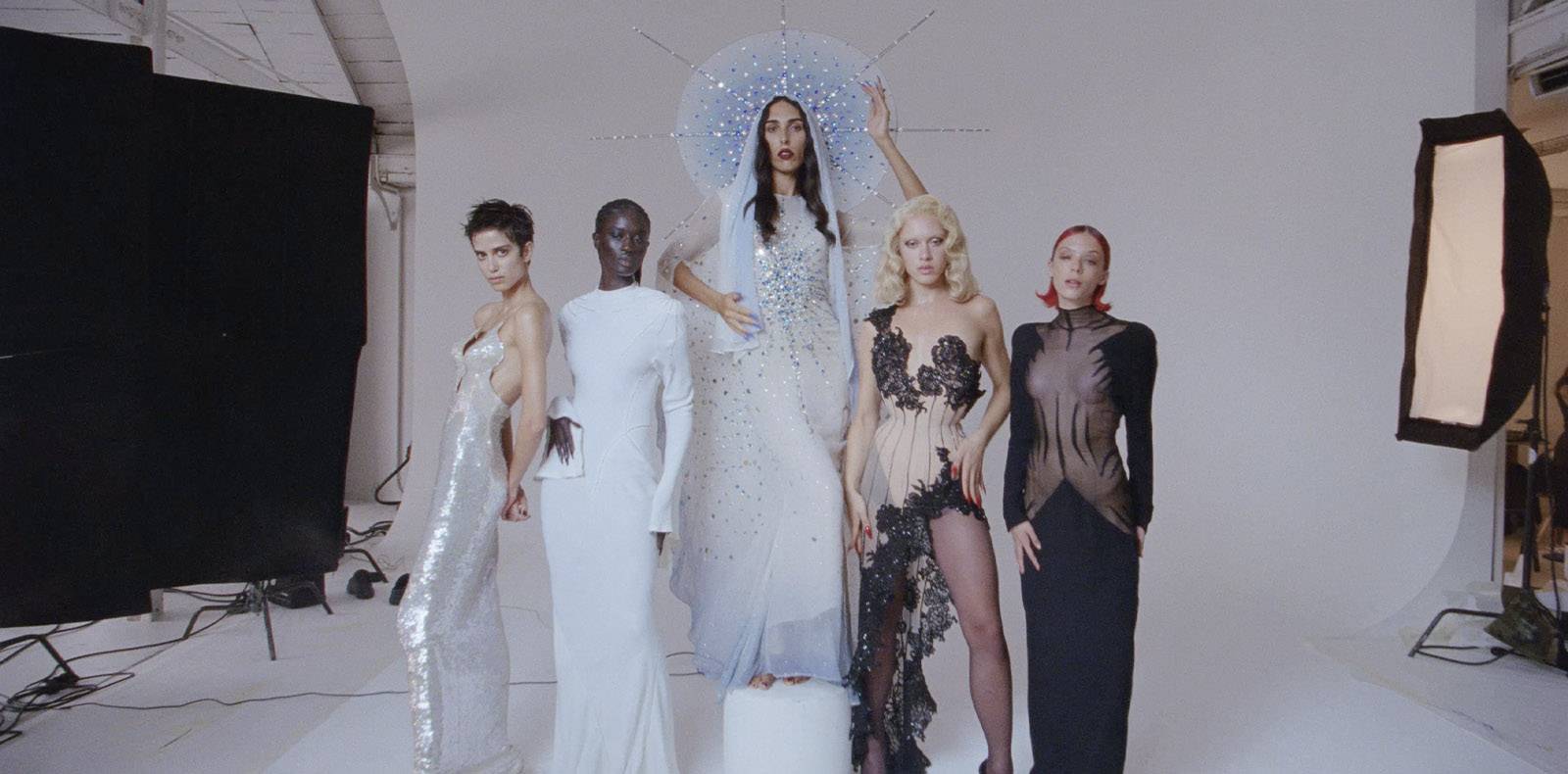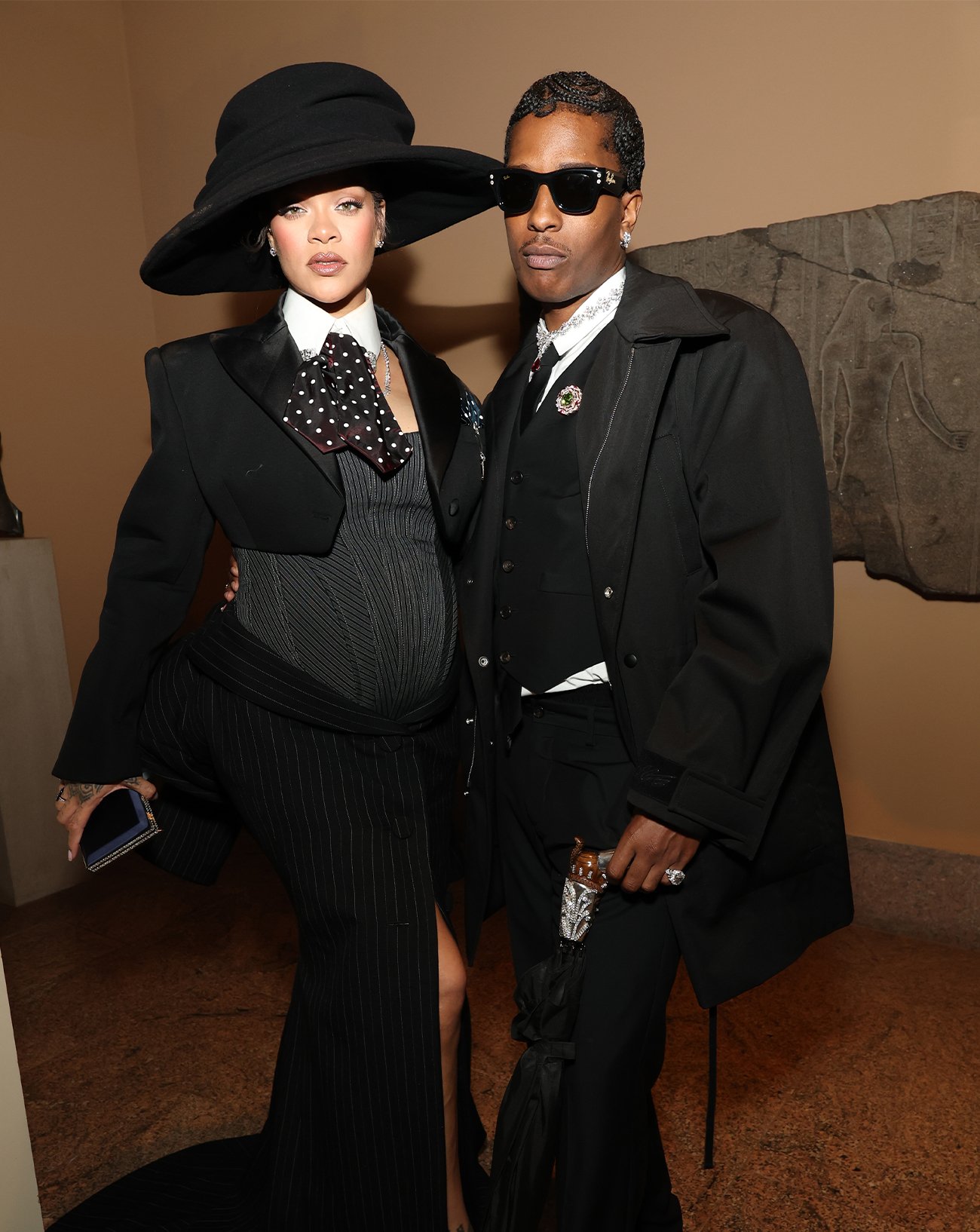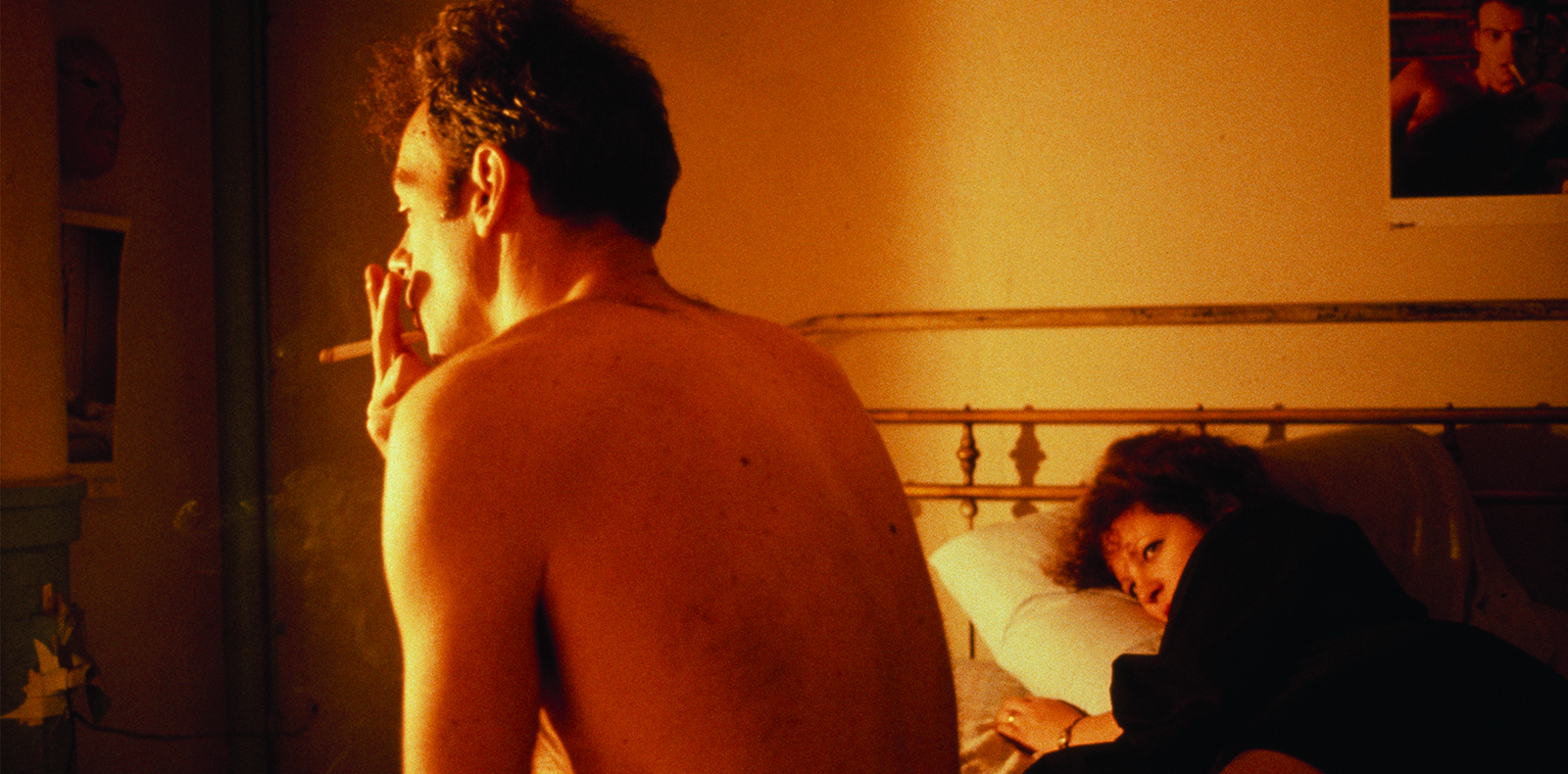
8

8
From Nan Goldin to Nobuyoshi Araki: 6 photographs about love
How to capture love on a camera roll? The new collective exhibition “Love Songs. Photography and intimacy” aims at solving this mystery with fourteen series created by major photographers of the 20th and 21st centuries. This ensemble is displayed in Paris at the Maison Européenne de la Photographie (MEP) until August 21st. From Nobuyoshi Araki, Nan Goldin, or Collier Schorr to Larry Clark, their works unfold myriad love stories from the first love affairs to separations, without leaving sexuality out of the picture. Discover the different stages of a romantic relationship with six stirring photographs exhibited at the MEP.
By Matthieu Jacquet.
1. Passionate love: JH Engström and Margot Wallard
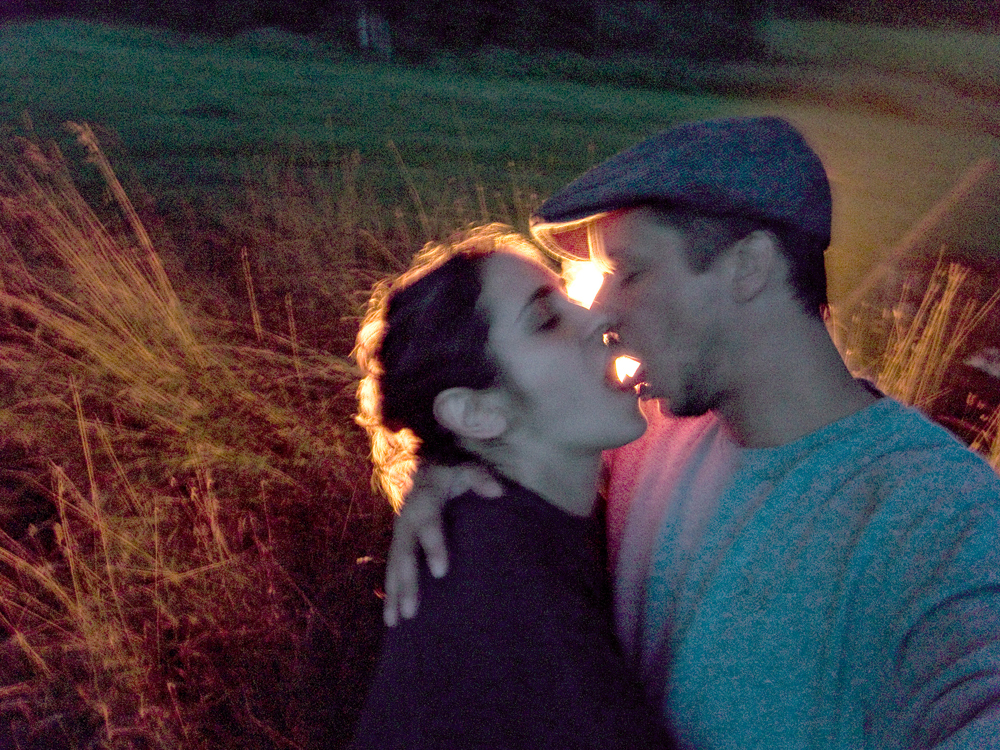
She lives in central Paris. He lives in the Swedish countryside. But when Margot Wallard and JH Engström met in the late 2000s, an “inescapable and blind” passion arose between the two photographers, as they coined it, despite the cultural and geographical obstacles. Within less than a three-month-period, the artistic duo took a dozen photographs telling the story of their chemistry and compiled them in the bookForeign Affair, commissioned by an editor they met in 2010. During this intense period, the couple photographed themselves everywhere – in a photo booth, on Parisian rooftops, in the snowy forests of Värmland or in their own bed. Whether it is on their passport’s photos, or on pictures taken before, during and after sex, one appearing through the gentle lens of the other, and on selfies together, their gazes become one and the same. These spontaneous images bear witness to a love story that crosses borders and landscapes. For instance, the photograph of a dog with a wolf in a meadow in which the two lovers, holding the camera in front of them, are about the kiss each other passionately, while a flame burns behind their faces in profile as a reminder of their burning desire. Today, the two spouses live in Montreuil with their son Sam. The latter appears in a recent picture added to their installation at the Maison Européenne de la Photographie… sounds like the outcome of their romantic and artistic relationship.
2. Taboo love: Hervé Guibert

In Christian arranged marriages during the Middle Ages, the tradition told women to hide their face to their future husband with a veil until they reached the altar. Centuries have passed now, and Hervé Guibert’s lens no longer shows women covered with the wedding cloth, but a young naked man, whose fine transparent fabric gives us a subtle glimpse at some details thanks to a window lightening. When he immortalized Thierry Jouno in 1982 – one of his first lovers he met at the age of 20 – the French writer and photographer already shared his life with him for eight years. As the focus of several photographs, the young man embodied one of his longest relationships and inspired him until he passed away in 1991. With his series intitled Le fiancé, Hervé Guibert debunks a heterosexual and religious tradition in staging a taboo desire: the lust a man feels for another one, at a time when France tends to abolish any discrimination made against homosexuals. This picture evokes with a great delicacy a relationship that one still struggles to accept, let alone make it public. It was not until 2013, so 22 years after Hervé Guibert died of AIDS and 31 years after Le fiancé, that same-sex marriage was legalized in France.
3. Toxic love: Nan Goldin

It is perhaps one of the most famous photographs of the last forty years. On a bed lighted up by a warm and soft lightening, Nan Goldin lies down prostrate on a mattress, starring at her lover Brian, who turns away from her while smoking his cigarette. The overall scenery seems to occur after a shared intimate moment. This image often stands as the epitome of the American photographer’s well-known series The Ballad of Sexual Dependency, which tells us the story of the young woman and her friends’ daytime and night wanderings at the time of sexual liberation. It also says lot about her relationship with her former partner, who shared her life between 1981 and 1984. Madly in love, but awfully dependent on that man, Nan Goldin never missed a chance to translate their romantic setbacks on camera, between moments of pure bliss, intimacy, and excess. In 1984, she created Nan one month after being battered, a raw self-portrait in which she stands alone, her swollen face covered with bruises, a month after being beaten by her partner. Even though she never named the man who did that to her, the photograph leaves us wondering about the tragic ending of her toxic relationship with Brian, who one day, driven by an all- consuming jealousy, may have almost made her go blind.
4. Forbidden love: Hideka Tonomura
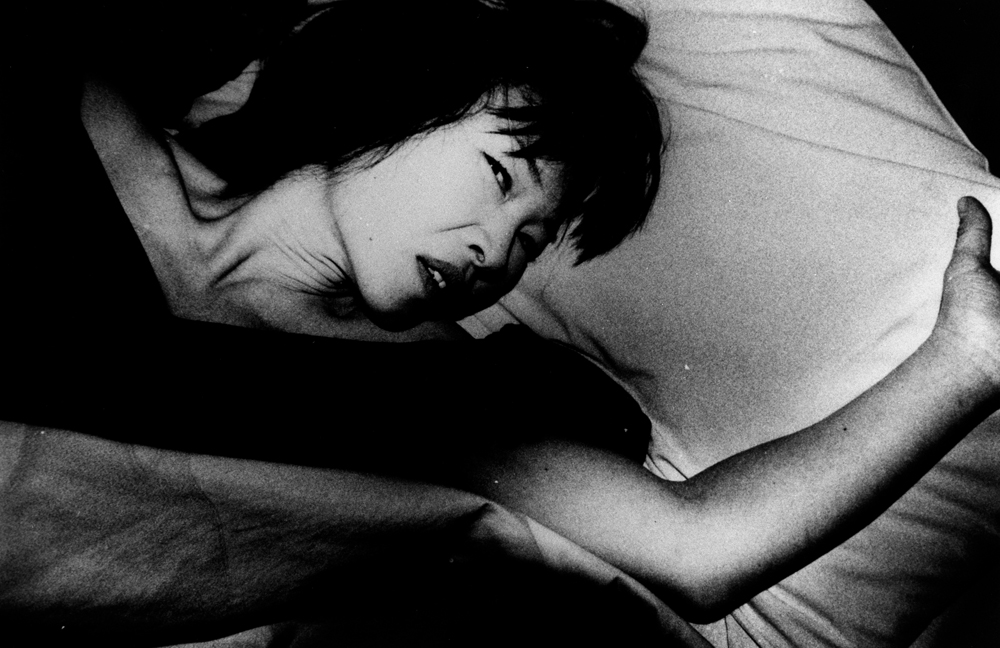
Immortalizing their partner is a commonplace for photographers. However, taking a picture of one’s own mother, let alone in an adulterous relationship, is less frequent. This is what Hideka Tonomura did in 2007. When the young Japanese photographer found out about her mother’s lover, she decided to grab her camera and break the rules of this secret, if not embarrassing affair – although it was a liberating one considering the influence her mother’s violent and dangerous husband had on her. Taken in a hotel, these intimate shots had something that stroke the photographer’s attention – her mother’s eyes. For the first time ever, she found her mother powerful, filled of love and madly herself. Hideka Tonomura chose to darken the “lover of the dark room”’s body until he became a threatening shadow, in order to focus on the expressiveness of this unprecedented and salutary time of her life as a woman. Thus, the anonymous silhouette turns into the mysterious being who both drowned her mother in sin and enabled her to get her life back as a woman.
5. Love through the test time: Emmet Gowin
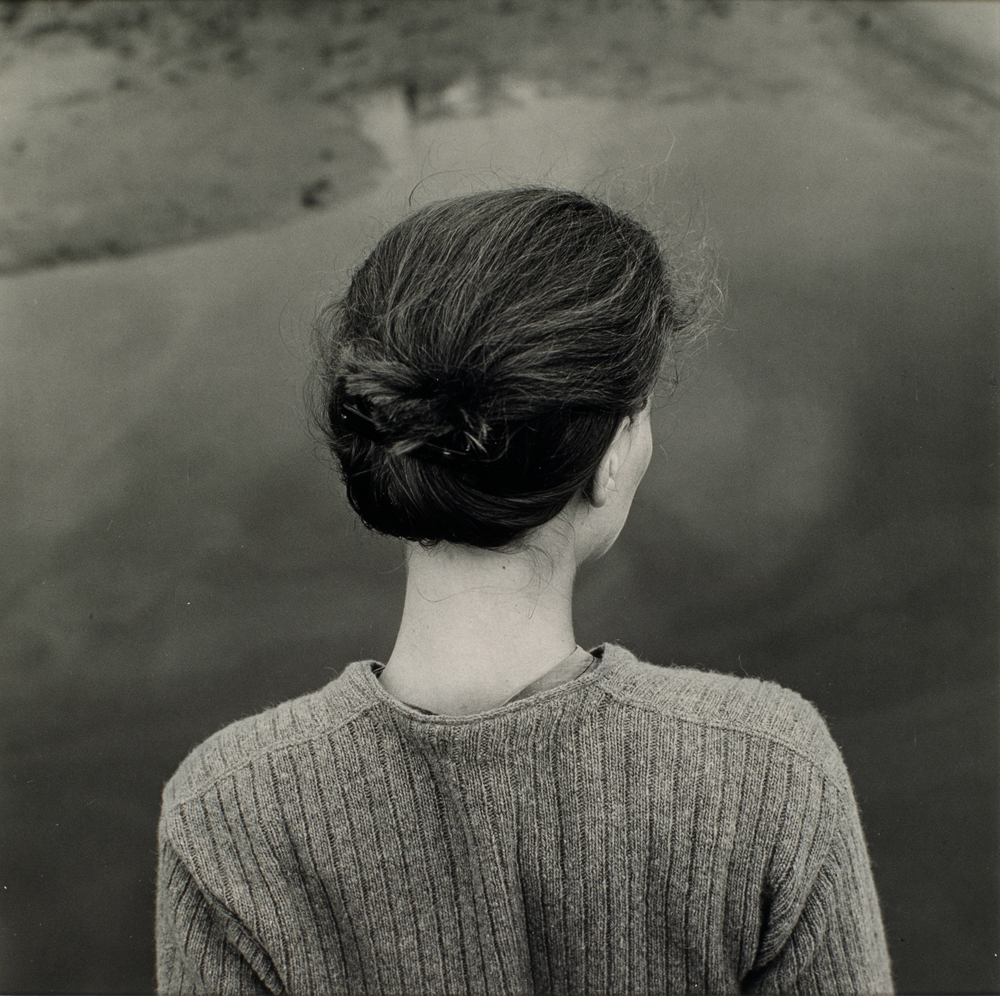
“I feel like I’ve never seen someone more alive than her”, Emmet Gowin once said about his wife Edith. From their first encounter and union in the early 60s, the American photographer has made her life- partner the centerpiece of his works. All over the years, she has been her narrative arc and a genuine obsession to him. From one black and white portrait to another, she appears quite determined, sensual, brutal at times, as a loving mother with her child or a caring daughter with her parents – many different faces that the photographer unveils. Even though it was taken only two years after their wedding, this 1964 photograph shows his wife’s back in a medium close-up shot with a few grey locks falling out of her bun. Her face is turned to the right, and she seems to gaze at the many years of life waiting for her and her relationship. In 2012, Emmet Gowin captured her face and naked body with the same loving kindness he demonstrated fifty years ago
6. Eternal love: Nobuyoshi Araki
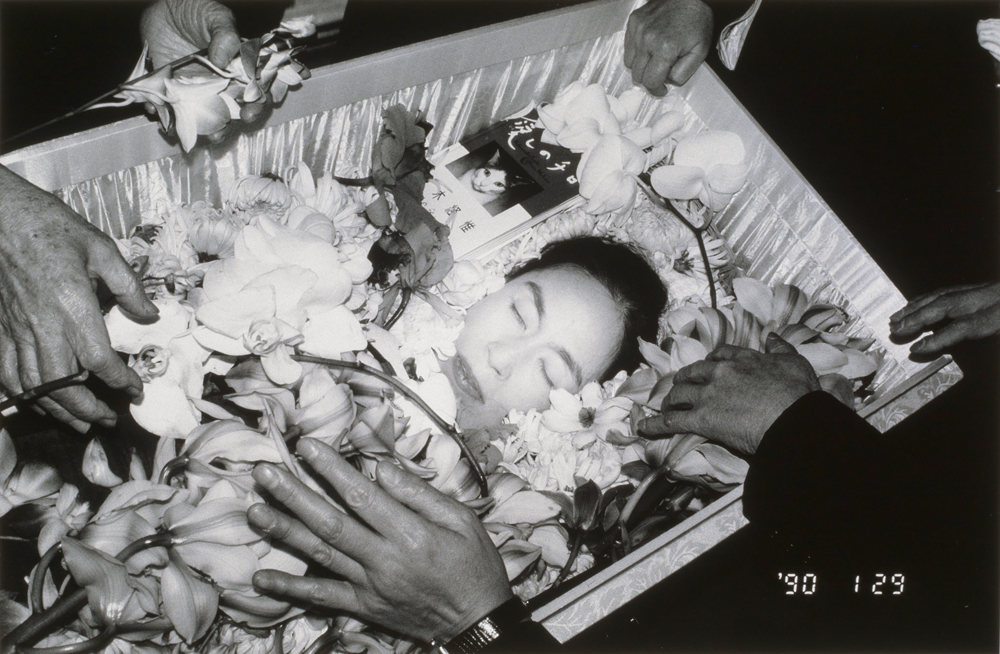
Along with Nan Goldin, the great Japanese photographer Nobuyoshi Araki has been an inspiration to Simon Baker, director of the Maison Européenne de la Photographie, for his exhibition’s project “Love Songs”. It comes as no surprise that the Sentimental Journey series – a chronicle of the photographer’s honeymoon with his wife Yōko in 1971 – is probably one of the most representative works of a theme that gathers fourteen photographers in Paris. If several shots from this series are part of the exhibition, many of their counterparts from the Winter Journey series are displayed too. This series was made between 1989 and 1990, before and after Yōko’s died of cancer. Following Araki’s words, his wife is the one who motivated him to be a photographer and who guided him throughout his life without her. Hence, this high-angle shot of the Japanese woman in her coffin, her face resting peacefully and shining in an white angelic light. She is covered with flowers, while some warm hands touch her. On her left-hand side, one can notice a portrait of their cat Chiro. The cat would eventually take more and more space in the series, as the last living reminder of their ended relationship and as the incarnation of the void Yōko’s passing left in Nobuyoshi Araki’s heart.
“Love Songs. Photography and intimacy” on now until August 21st, 2022, at the Maison Européenne de la Photographie, Paris.






